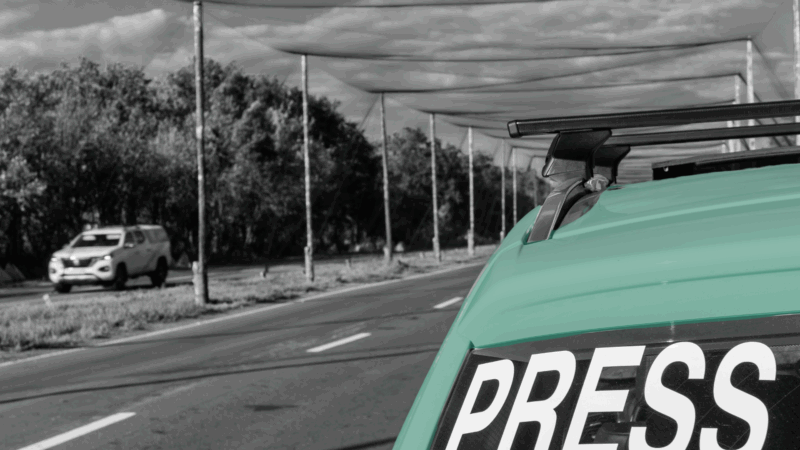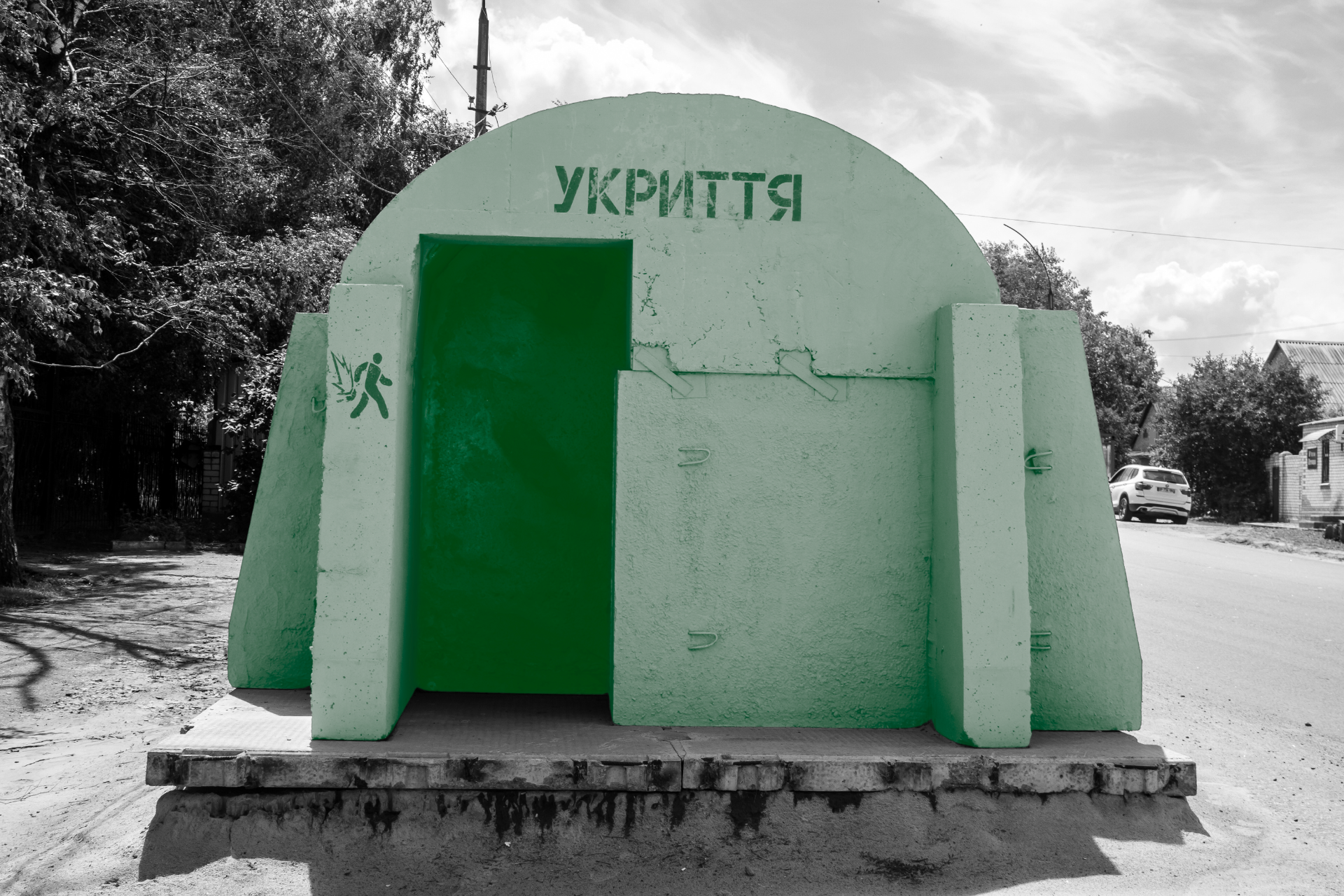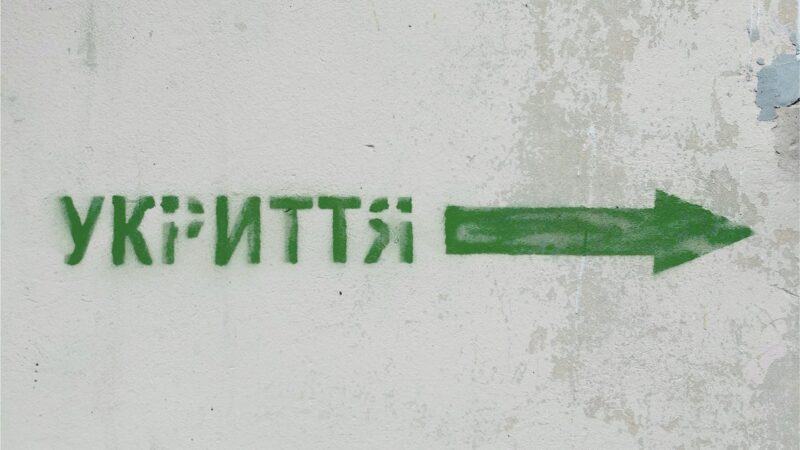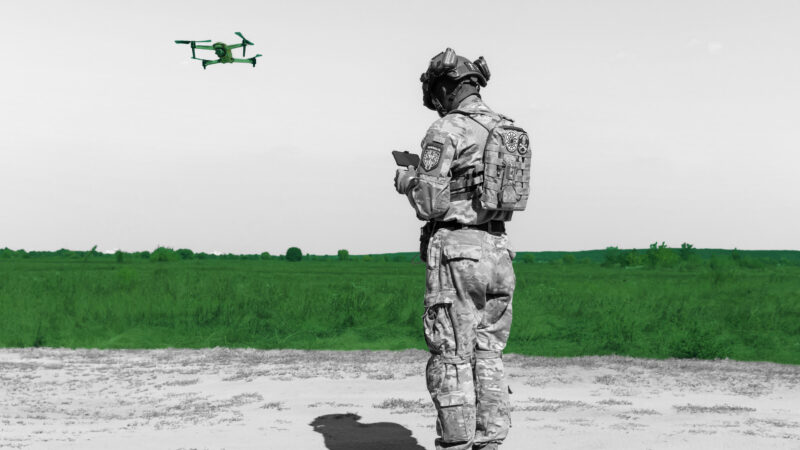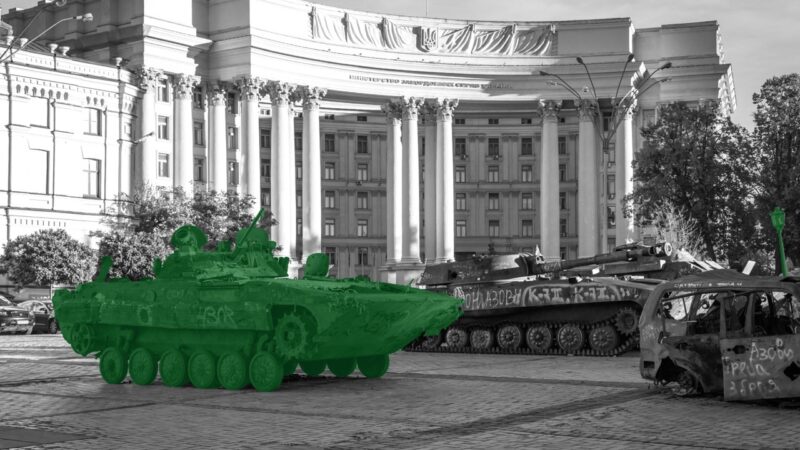Ukrainian migrants and Ukrainian-Polish relations
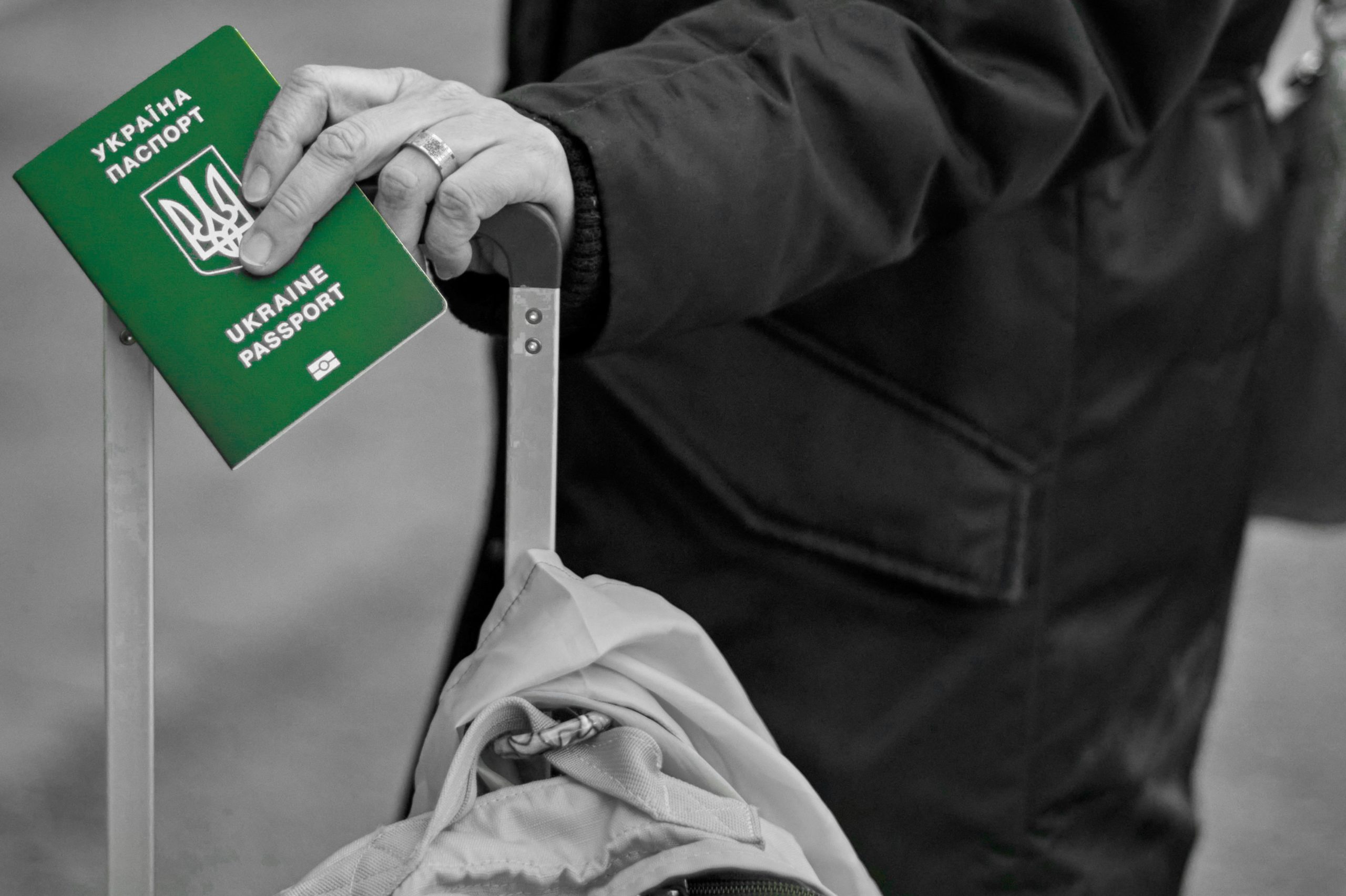
Since the beginning of the Russian invasion on 24 February 2022, Poland has received the greatest number of migrants from Ukraine. More than 3.8 million people from all over Ukraine crossed the Ukrainian-Polish border, and 1.1 million registered for temporary protection in Poland, most of them women and children. More than 1.9 million of the Ukrainian migrants, especially those from the western and central parts of the country, have already gone back home; meanwhile, some 27% of the Ukrainians declare they will stay in Poland even if the war ends.
This unprecedented migration crisis has been managed jointly by Poland’s non-governmental organizations, society, and state. The NGOs have created an extensive system of assistance (humanitarian aid at the border, accommodation placement, childcare, etc.). About half of the migrants found free accommodation in the homes of Poles or Ukrainians living in Poland. Two weeks after the start of the escalated invasion of the Russo-Ukrainian war, the Polish parliament adopted a special law that gives Ukrainian migrants the right to work as well as a free access to health care and education. They may also benefit from social assistance on the same terms as Polish citizens. They benefit in particular from “500+”—the key social program of the ruling Law and Justice party, which provides a monthly allowance of some 100 USD for each child under 18.
Three groups of Ukrainians in Poland
The recent Ukrainian migrants are by no means the first group of ethnic Ukrainians in Poland. According to the 2011 census, about 50,000 Polish citizens declare Ukrainian ethnicity. Most of them are descendants of the victims of the Akcja ‘Wisła’ (Vistula Operation, 1947), in which the Communist authorities resettled more than 140,000 Ukrainians and Lemkos from their ancestral territory in today’s southeastern Poland to the ziemie odzyskane (recovered lands) in the northwestern part of post-war Poland, which had been taken from Germany in 1945.
Since the early 2000s, Poland has faced increasing migration pressure from Ukraine due to the growing economic gap between Poland and neighbouring western Ukraine. Immigration from Ukraine has increased considerably since the beginning of the Russian aggression in 2014. Before 24 February 2022, some 1.35 million Ukrainians lived in Poland. Most of them worked in households, construction and renovation, and agriculture. The work performed by Ukrainians in Poland does not usually require high qualifications and often does not correspond to the education and skills acquired by the migrants in their home country.
Both groups have played an active role since the escalation of the Russian invasion—organizing protests, coordinating aid for Ukraine and Ukrainians in need, and becoming unofficial spokesmen of Ukraine in Poland, together with Andrii Deshchytsia, that country’s ambassador to Poland. An important role was played in particular by the foundation Nasz Wybór (our choice), established some years ago to help Ukrainian migrants in Poland, which runs the Ukrainian House in the Warsaw city center, as well as by, to a lesser degree, by the Union of Ukrainians in Poland, the largest association representing the minority Ukrainian community in Poland. Ukrainian House has become a major hub of aid, providing advice and support for Ukrainians arriving in Poland, finding accommodation for people in need, and coordinating the distribution of aid and support to Ukraine together with Polish NGOs, business entities, and the public administration.
Poles and Ukrainians
According to an opinion poll conducted in March 2022, some 53% of Poles declared that Ukrainians fleeing from the war should stay in Poland as long as necessary, while 33% claimed that they should be admitted to Poland temporarily and then relocated to other countries.
It is difficult to assess how many Poles got personally involved in helping Ukraine and Ukrainians. Some popular FB groups devoted to this activity have hundreds of thousands of members, but this is not a fully reliable indicator. According to very rough estimates, about half of the 3.5 million Ukrainian citizens who crossed the Polish border after 24 February stayed with Poles (or Ukrainians living in Poland) for free. It is thanks to their involvement that this wave of displaced persons from Ukraine—an event of an unprecedented scale in Europe since the end of World War II—did not turn into a major crisis.
The specific and unique position of Polish society vis-à-vis Ukraine is due to at least two factors. One stems from a fear of Russia; according to a survey conducted in 2019 by the PEW Research Center, Poland was the only one among 26 polled countries where Russia’s “power and influence” was recognized as the biggest threat (not climate change or ISIS). At the end of February 2022, some 78% of Poles feared the war in Ukraine might threaten the security of Poland; in May the number remained high albeit somewhat lower, at 73%. Another factor is the evolution of perceptions between the two countries in the last 30 years. In 1994 less than 10% of Polish society had a positive opinion of Ukrainians, and since then this percentage has steadily increased—to 43% in January. In Ukraine such studies were not carried out regularly; we note, however, that in 2015 53% of Ukrainians declared their attitude toward Poles was “warm” or “very warm”—already putting Poland first among the surveyed countries.
The important evolution of bilateral perceptions is also confirmed by a decrease in social distance as measured by the “Bogardus scale”: in 2000 one-third of Polish society and half of Ukrainians were not against a person from the other country receiving citizenship in their country, while in 2013 at least 90% of respondents would agree to it; the vast majority of respondents would also accept a Pole or Ukrainian as a neighbour or family member. Poles no longer associate Ukraine with the most difficult episodes of Polish-Ukrainian history, especially the tragic 1940s. While in 2013 as many as 26% of respondents in Poland pointed to negative historical associations when asked about Ukraine (almost half of those referred to 1943–44), in 2020 this number went down to 7.2%.
The changes in mutual perception developed to a large extent from getting to know each other. An important role was played here by the media, especially the Polish media, which reported in detail and favourably on Ukraine during the successive stages of its struggle for democracy and European belonging: the “Orange Revolution” (2004), the “Revolution of Dignity” (2013–14), and the current fight against Russian aggression. The Ukrainian media, in turn, has painted a largely positive image of Poland as an example of successful post-Communist transformation. Important—perhaps the most important—was the increased number of direct contacts between the two countries resulting largely from Ukrainian migration to Poland.
The outpouring of support from Poland and its inhabitants has not gone unnoticed in Ukraine. According to a survey from March–April 2022, 67% of respondents in Ukraine considered that Poland supported Ukraine the most; this was the highest rate among the countries covered by the survey. In addition, 86% of those polled considered that since 24 February Polish-Ukrainian relations had improved significantly (72%) or somewhat (14%).
A Polish-Ukrainian federation?
On a political level, Ambassador Deshchytsia claimed that since the beginning of the full-scale invasion Ukraine “lost a brother, which was Moscow, but regained a sister, which is Poland.” Polish Prime Minister Mateusz Morawiecki, together with his Czech and Slovenian counterparts, were the first European leaders to visit Kyiv during the active skirmishes in mid-March 2022.
Since the late 1990s Poland has aimed at helping to strengthen Ukraine’s ties with the EU and NATO, in particular to prevent its potential return to the Russian zone of influence—keeping in mind Zbigniew Brzezinski’s remark that “without Ukraine, Russia ceases to be an empire, but with Ukraine suborned and then subordinated, Russia automatically becomes an empire.” For its part Ukraine, even when it was less interested in bilateral cooperation, considered Poland to be a bridge, and later an advocate, within Euro-Atlantic structures. Both countries however clashed frequently, often due to conflicts of memory that divided Poles and Ukrainians; Russia skillfully manipulates this issue, applying the ancient principle divide et impera.
The Kremlin’s hostility confirms the importance of a Polish-Ukrainian “strategic partnership” and the complementarity of their security interests. The rapprochement of the two countries has led some commentators to raise the possibility of a Polish-Ukrainian “federation.” This partly refers to Poland’s historical interwar “Intermarium” project, which aimed at uniting the Central and Eastern European countries bordering Russia/USSR; it has gained great popularity in Ukraine since 2014. Some even see the United Kingdom as a potential major partner in such an endeavour, especially since the announcement of the Polish-Ukrainian-British security pact in mid-February, mere days before the escalation of Russia’s invasion.
These projects confirm the importance of bilateral cooperation. However, they should not by any means be considered sufficient. What Ukraine needs and must aim for is membership in the European Union—and possibly, in a more distant future, in the North Atlantic Treaty Alliance. Poland gains strength and security from its membership in the EU and NATO, and while Ukraine would unquestionably benefit in the same way, it is the path to membership and the accession process, forcing the country to conform with their principles, that would give Ukraine the most transformational benefits.
Some challenges ahead
In the meantime, the Ukrainian war refugees and Poland, which has received them, face some concrete challenges, from the language barrier (Polish and Ukrainian are both Slavic languages, but many people from eastern and southern Ukraine hardly understand anything in Polish upon their arrival) to PTSD. Vacancies have become scarce: apartment rental fees went up because of the influx of migrants, and after months of the conflict landlords are not as willing to offer the Ukrainians accommodation free of charge—especially because after June it is not subsidized anymore. This may lead some Ukrainians to become homeless, which would be particularly difficult during the harsh winter season. NGO aid is also declining, due to volunteer burnout. In addition, the Polish education system may be too rigid to facilitate the integration of Ukrainian children, for both financial and ideological reasons.
Until now there was a broad consensus in the Polish political class and society about the need to help the Ukrainians, but this may change. First, in time “Ukraine fatigue” may negatively affect the situation of the refugee Ukrainians in Poland. Second, the populist policy of the government in power in Poland added to increasing fuel prices has already driven up inflation, and the Ukrainians might easily become the first casualties of the decline in the Polish public mood. Third, that same Polish government clearly favours a homogenous state and an ethnic concept of the nation; it also tends to perceive the international environment through the prism of history. In that context the presence of a growing Ukrainian community, as well as the conflict of historical memories, may become problematic, highly politicized issues.
Prospects for the future
During the next two years the total number of Ukrainian displaced persons in Poland could vary from 1.7 million (if the war ends quickly and the peace deal is relatively favourable to Ukraine) to 3.4 million (in the case of a prolonged war that spreads beyond southeastern Ukraine). A constant flow of refugee Ukrainians to Poland (and beyond) will fuel population growth there, yet it will contribute to the demographic decline in Ukraine.
Regardless of how many Ukrainians come to Poland, it is on the way to becoming a multi-ethnic (or bi-ethnic) state. Even before 24 February, Ukrainians already constituted the biggest ethnic minority in Poland (including on their historical territories in western Galicia), but the experience of living together “under one roof” since then has brought both Ukrainians and Poles much closer together. For example, before 2022 the fact that some people in the world celebrate “Old-Style” Christmas and Easter seemed unfamiliar to the strongly Latin-rite Roman Catholic Polish population; however, this year Poland celebrated both “Polish” (NS) and “Ukrainian” (“OS”) Easter. Four months after the escalated Russian aggression, countless Ukrainian flags are still hanging in Warsaw and other Polish cities as a sign of support—a true modern miracle in the intertwined history of both countries.
Ukrainian refugees who decide to stay in Poland might not be covered by social aid programs after a certain point, but they will be able to contribute to the development of their new homeland—including participating actively in Polish politics. Some European countries, like Sweden, already allow non-EU migrants who live there to take part in local elections. According to the 1990 Polish law on local self-government, a local self-governing community is formed by all its inhabitants. This should include foreigners living there as well—in this case, the Ukrainians. As for parliamentary and presidential elections, the situation is more complicated, as according to the 1997 constitution MPs and the head of state are elected by the citizens of the Republic of Poland only. Polish citizenship can be obtained either by civil acknowledgment—with foreigners needing to meet several criteria, including several years’ residence in Poland and knowledge of the Polish language—or through a decision of the Polish president to grant citizenship. In the latter case, the president is not limited by any conditions and may grant Polish citizenship to any foreigner. If the current political situation allows it, this could be the easiest way to fully integrate new Ukrainian permanent residents into Polish society.

